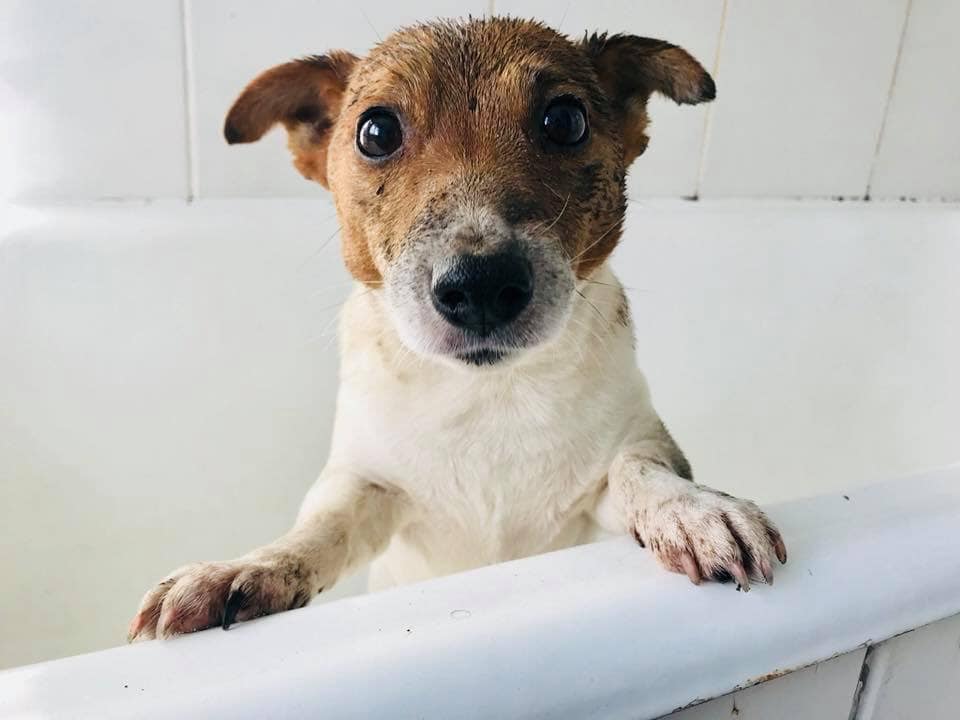Table of Contents
Summer is coming, and that means flea and tick season. Or maybe you live in a warm climate where it’s flea and tick season all year round. Either way, it’s a drag. And either way, every dog owner, sooner or later, will have to do something about it.
*This post may contain affiliate links. As an Amazon Associate we earn from qualifying purchases.
There are pharmaceutical products that work well. However, they can be expensive. And if you read the warnings section of the enclosed material, it can sound pretty scary. Isn’t there anything else a pet parent can do?

Yes, there is. In fact, there are a number of safe, non-pharmaceutical anti-flea preparations you can make from food-grade ingredients you may even have at home.
A Few Caveats
The measures I’m going to be discussing in this article don’t kill pests. Instead, they repel them in order to prevent infestations in the first place.
In order for repellent measures to be effective, it’s important to have a flea-free home and pet to begin with. Toward this end:
- Wash your dog’s bedding once a week in hot, soapy water
- Vacuum carpets regularly, especially near baseboards and in low-traffic areas
- Consider steam-cleaning your carpets as well
- Keep your lawn mowed and bushes trimmed
- Comb your dog with a flea comb whenever they come indoors from the outside
You will have to repeat the following measures often, and it may seem like a lot of work. On the other hand, you’ll have the peace of mind knowing that you’re not bringing poisons into your home, or putting them on your pet.

Vinegar Solution
A 1:1 solution of white or apple cider vinegar and water repels fleas effectively. They hate it (unfortunately, cats really hate it). You can apply this solution using a spray bottle or a cloth moistened with the solution. After 20 minutes, comb your dog with a flea comb.
You will, however, have to repeat this process every two to three days.
Lemon Juice Solution
You will need:
- One lemon
- ⅓ cup of dried rosemary (Do NOT use rosemary on cats. It’s toxic for them.)
- 2 cups of water
Boil the water, and cut the lemon into thin slices. Add the rosemary. Boil for five minutes, then cover and remove from the heat. Let it sit, covered, overnight, then strain.
You can add this liquid to your pet’s shampoo, or put it in a spray bottle and spray it on. Fleas hate the smell of lemon, and will stay away. Make sure not to get this into your dog’s eyes, though. Ouch!
Again, you’ll have to repeat this regularly.

Essential Oil Solutions
The power of citronella oil to repel mosquitoes and other bugs is widely accepted. You can even buy insect-repelling citronella candles at your local discount store. But can you use it on your pets?
The answer is yes…but.
You can’t just use any old essential oil. Many essential oils are highly toxic to pets. Also, you should never put essential oils into their food or water. And even the safe ones won’t kill fleas and ticks.
However, you can use a few drops of these oils to create sprays, shampoos, and solutions that will smell terrible to fleas and keep them away. Which ones can you use? Have a look:
- Rosemary (toxic for cats)
- Geranium
- Cedarwood
- Lemongrass oil
- Lavender
- Citronella
- Eucalyptus (toxic for cats)
Want more information? You can find detailed recipes and tips here.
Ultrasonic Pest Control
Ultrasonic pest control devices have been around for a long time. These devices plug into a wall socket and emit sound waves that humans, dogs, and cats cannot hear, but which insects (and rodents) can. The theory is that these sound waves annoy pests and keep them away.
There is a lot of contradictory information about whether these devices work. I, personally, have found them to be effective for cockroaches and ants. I have not used them for flea control.
Cautions
There are a lot of different devices on the market, and many of them work at different frequencies. Always check customer ratings, usage instructions, and return policies. Also make sure to check whether any given device is pet-safe.
Also, if you have rodents for pets — hamsters, rats, mice, etc. — this is probably not the method for you, as the ultrasonic waves are extremely painful for rodents.
Don’t Let Bugs Bug You

Fleas and ticks can be the bane of any pet owner’s existence. But you have a lot of tools in your toolbox to fight them. And some are as close as your own kitchen shelves.
They say an ounce of prevention is worth a pound of cure. Don’t wait until you have an infestation. With a little bit of work, you can keep your flea-free house and pet flea-free…naturally.
Featured Image: CC0 via Pxhere

